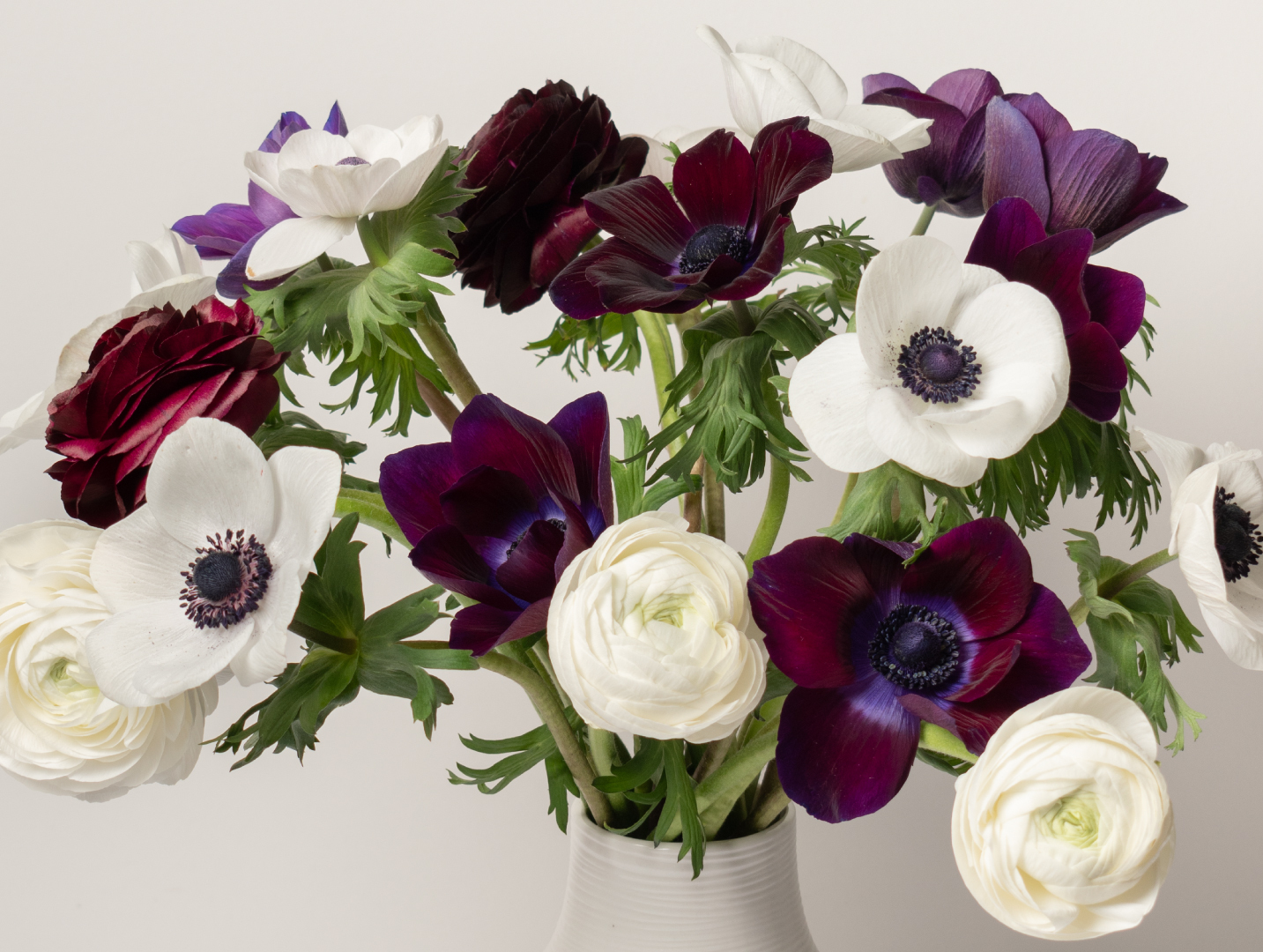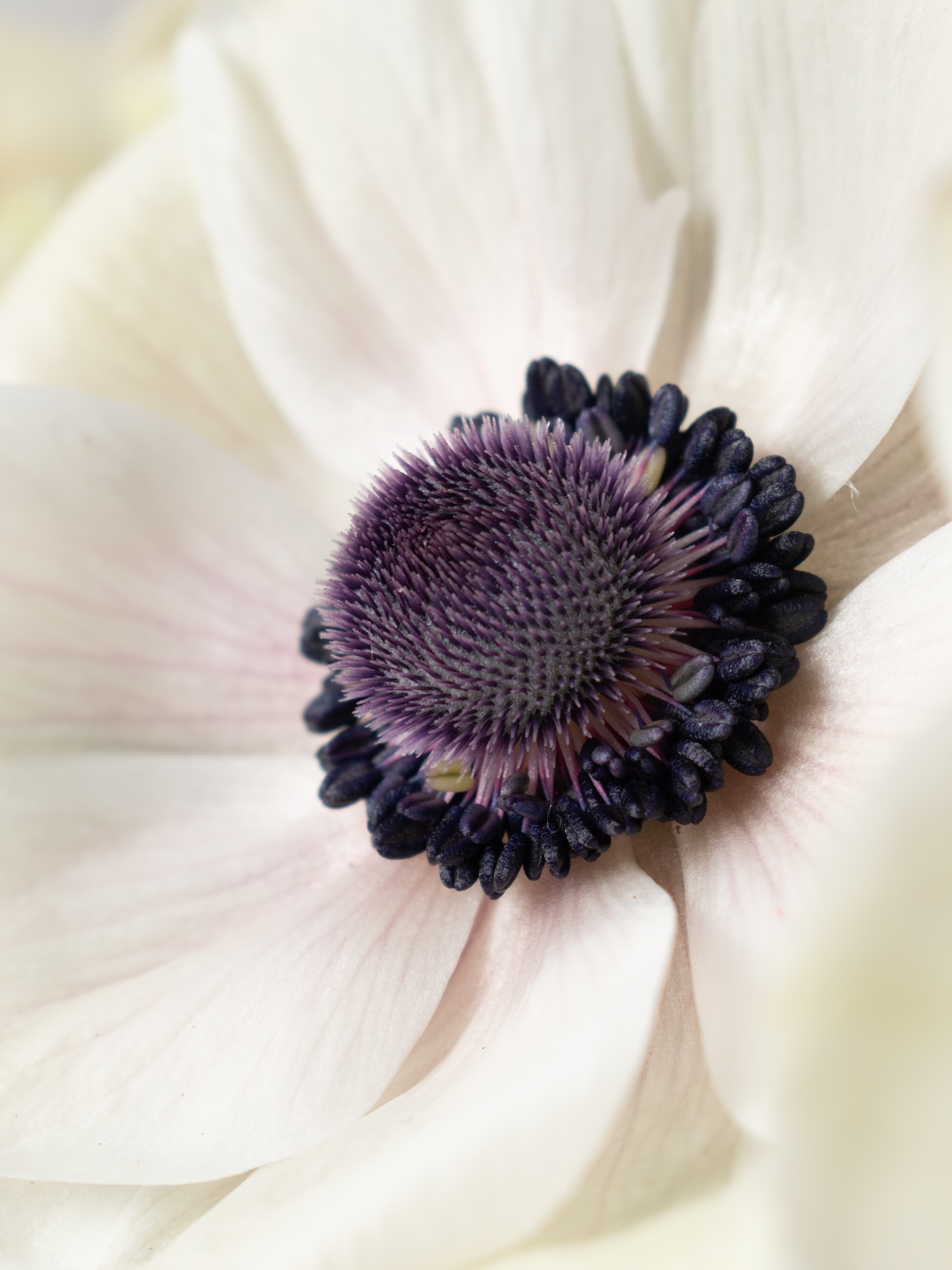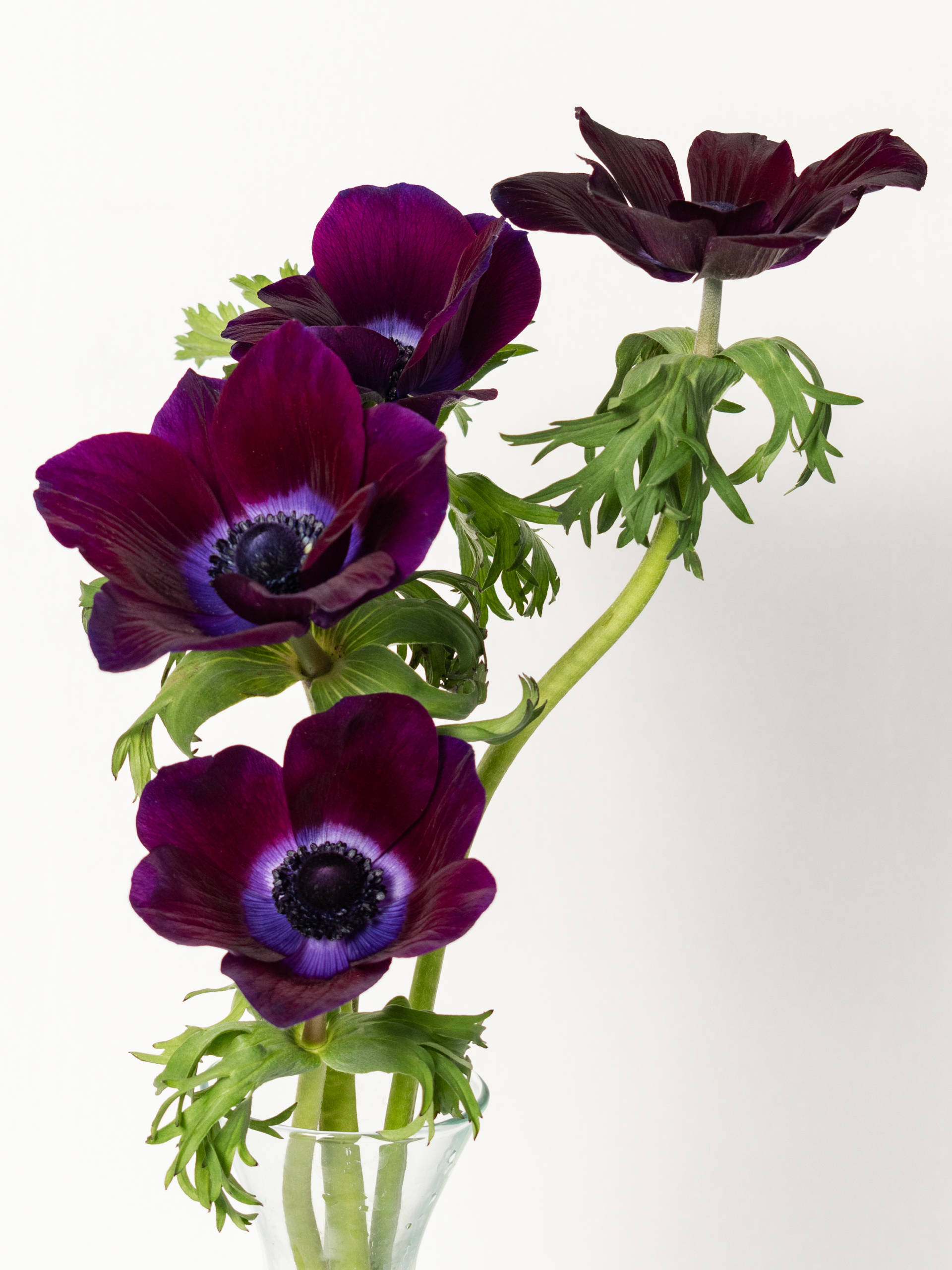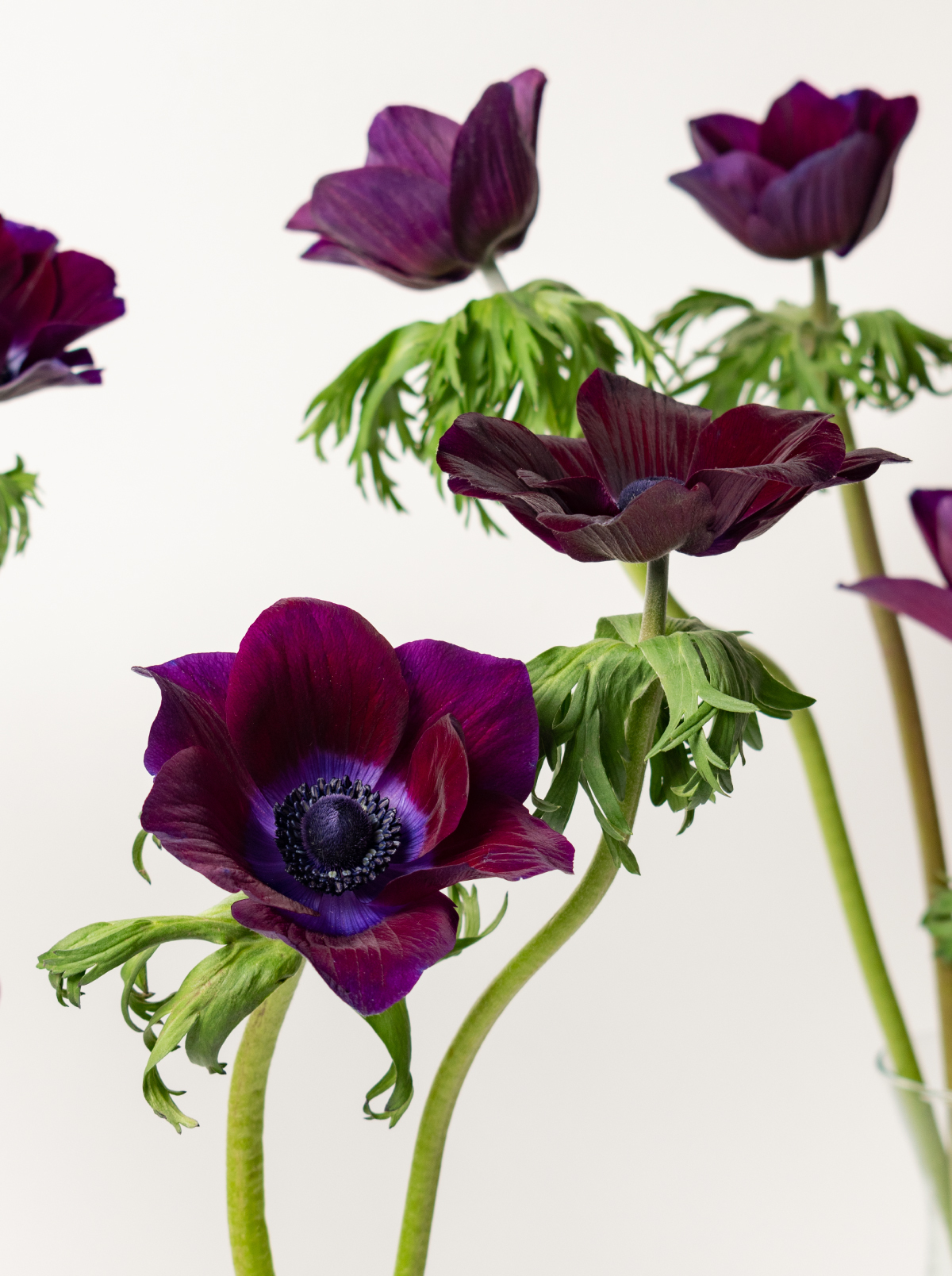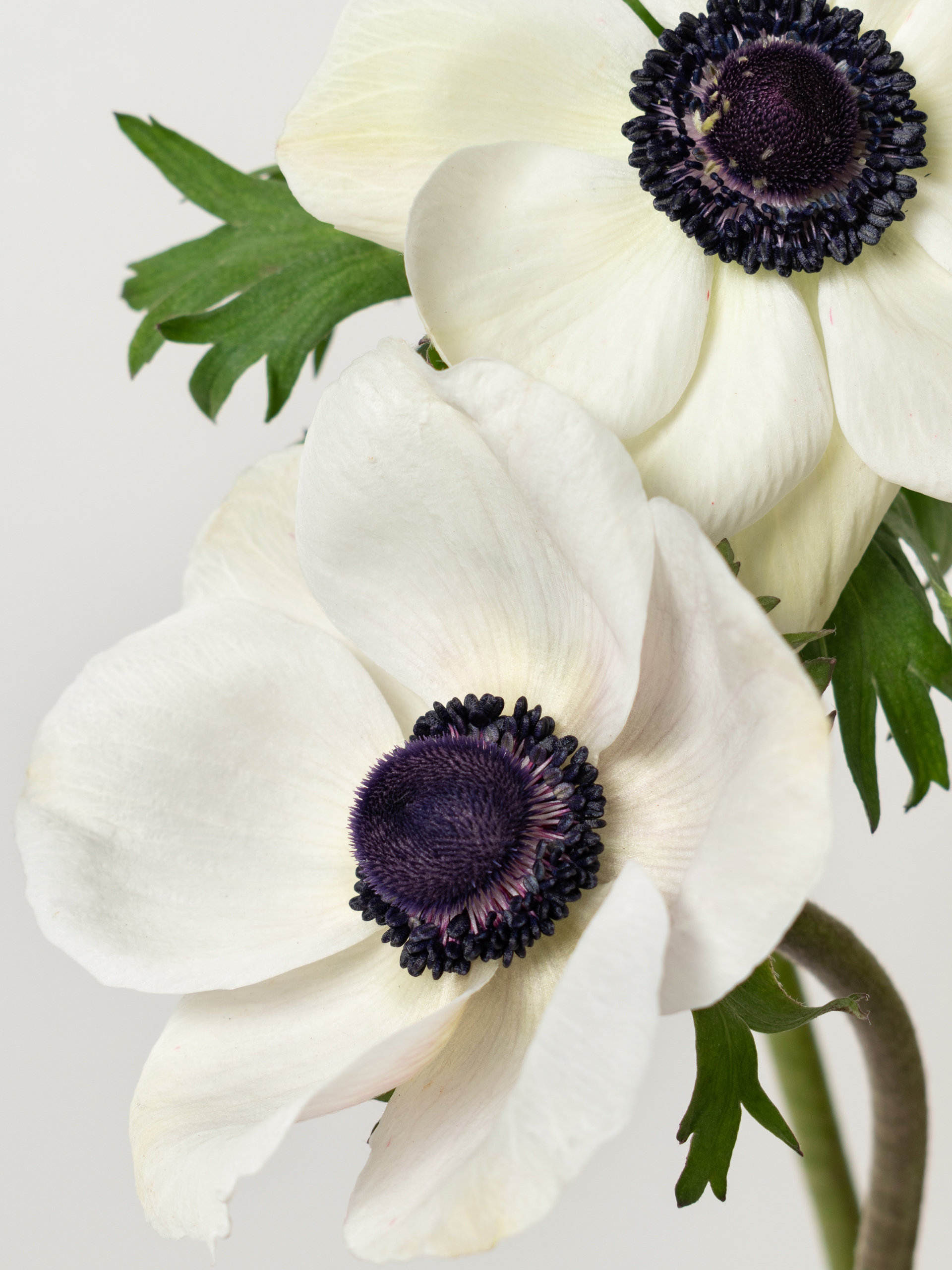Presenting the "Windflower": Anemones - Mistral Panda & Mistral Bordeaux
Since its inception over 27 years ago, Rosaprima has curated some of the most exquisite and luxurious roses on the market and has filled thousands of venues, homes, and spaces around the world to honor some of the most memorable events in people's lives.
A new chapter was opened for us last year, as we finally introduced Ranunculus to our catalog after almost three decades. This year, we are excited to introduce a newly cultivated product line: Anemones - Mistral Panda & Mistral Bordeaux, to continue being a part of life’s most extraordinary moments, now with more than just roses.
The word "anemone" comes from the Greek word for "windflower." When the wind blows, the petals open and the old ones fall off. The petals of the flower open up wide during the day, then close up at night and drop their heads in an attempt to prevent the dew from damaging their seeds.
What's Special about Anemones?
The delicate beauty and wide range of colors of anemones make them unique. They are native to Europe, Asia, and the Mediterranean. Anemones grow best in full sun, but will tolerate partial shade. They are perfect for bouquets, centerpieces, and other floral arrangements. The anemones bloom from November to March, but Rosaprima offers the flowers year-round.
The History of Anemones
The anemone gets its name from the Greek word for "windflower" and is a member of the buttercup family. In ancient Greece, it was believed that when the wind blew, the petals of the anemone would open and the old ones would fall off. In medieval Europe, it was believed that if you placed an anemone on your head, you would be able to see fairies. Today, the anemone is a symbol of anticipation and expectation.
How to Care for Your Anemones
Our Rosaprima Anemones are grown with the same dedication and passion as our iconic roses.
Our Anemones have a vase life of 10 days. Follow the instructions below to keep your flowers at their finest.
Step 1: First, you have to hydrate the Anemones. After taking them out of their packaging, place
them in water for at least two hours before removing the wrapping. This will allow the blooms to rehydrate.
Step 2: Remove the wrapping to allow the blooms to breathe and circulate air
Step 3: Using garden shears or a sharp knife, cut the bottom 1/2 inch off of each stem at an angle of 45 degrees
Step 4: The fourth step is to snip off all leaves below the vase's lip. The goal is to make sure nothing but the stem touches the water.
Step 5: Always place freshly cut Anemones in water with flower-food
Step 6: Change the water and trim the stems every three days will extend the vase life of your anemones.
Anemone flower arrangements
When cutting anemone stems for arrangements, be sure to use sharp shears or a knife to avoid crushing the delicate stems. As the weather changes, anemones can open and close throughout the day. They close when the weather is cold, and open when it is hot. The stems of anemones are typically 30 to 45 cm long, with vases adding an additional 8 cm. Each flower of an anemone usually has 5 or 6 petals. One bunch of anemones typically has 10 stems, and the flowers have no scent or nectar.
Delicate but bold in visual appeal, anemones will most certainly do the job if you’re looking for a statement-making bloom. Its natural contrast between the center and petals creates a visually-appealing aesthetic, whether the flowers are used as centerpieces or bouquets.
Make a bouquet with a combination of blooms that take up a lot of space: You can create a gorgeous bouquet of anemones with garden roses, or blend autumnal colors with creamy neutrals.
Our new Mistral Panda & Mistral Bordeaux anemones are sure to impress! These beautiful flowers are perfect for any occasion. With their wide range of colors and delicate petals, they will add a touch of elegance to any arrangement.
